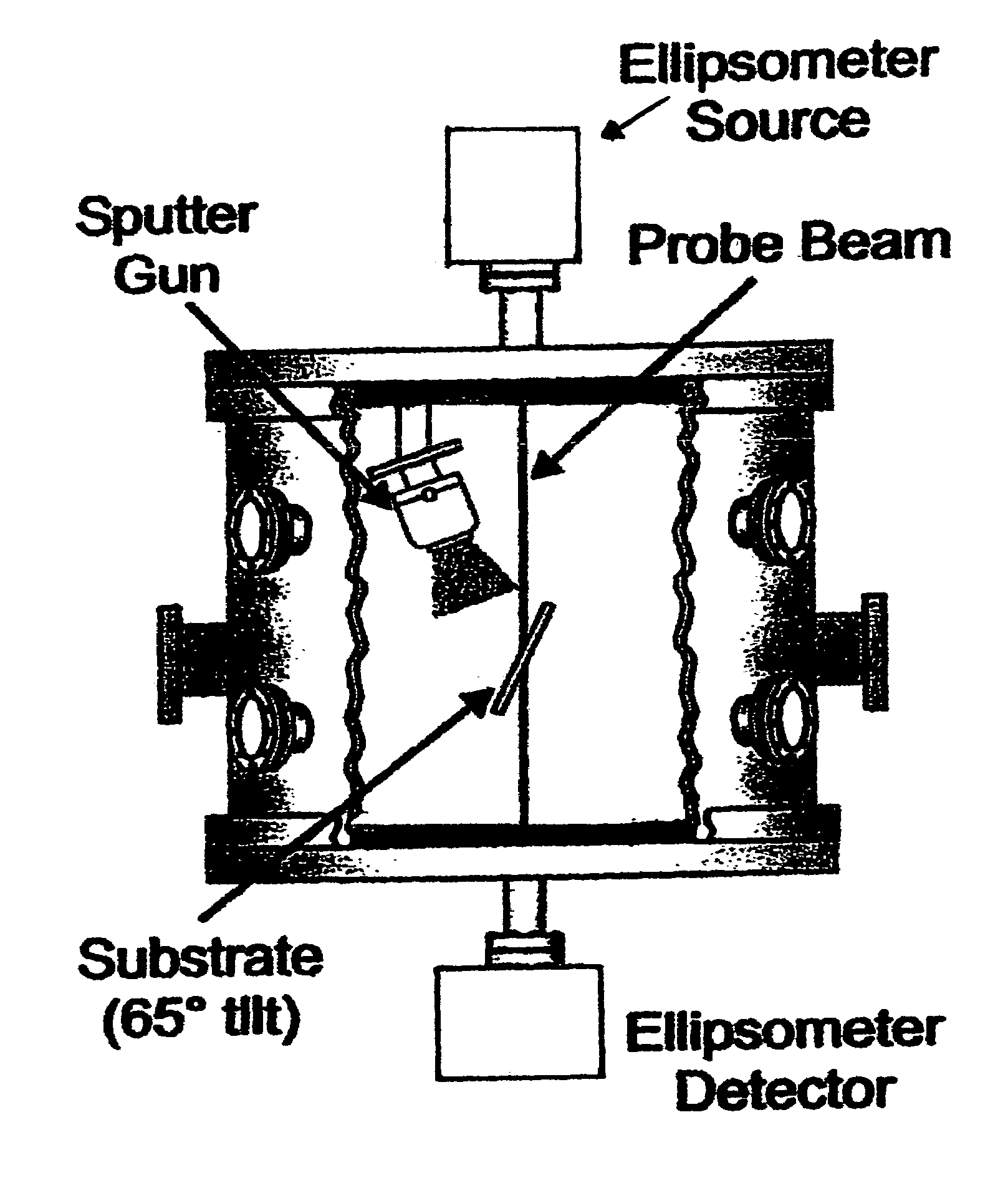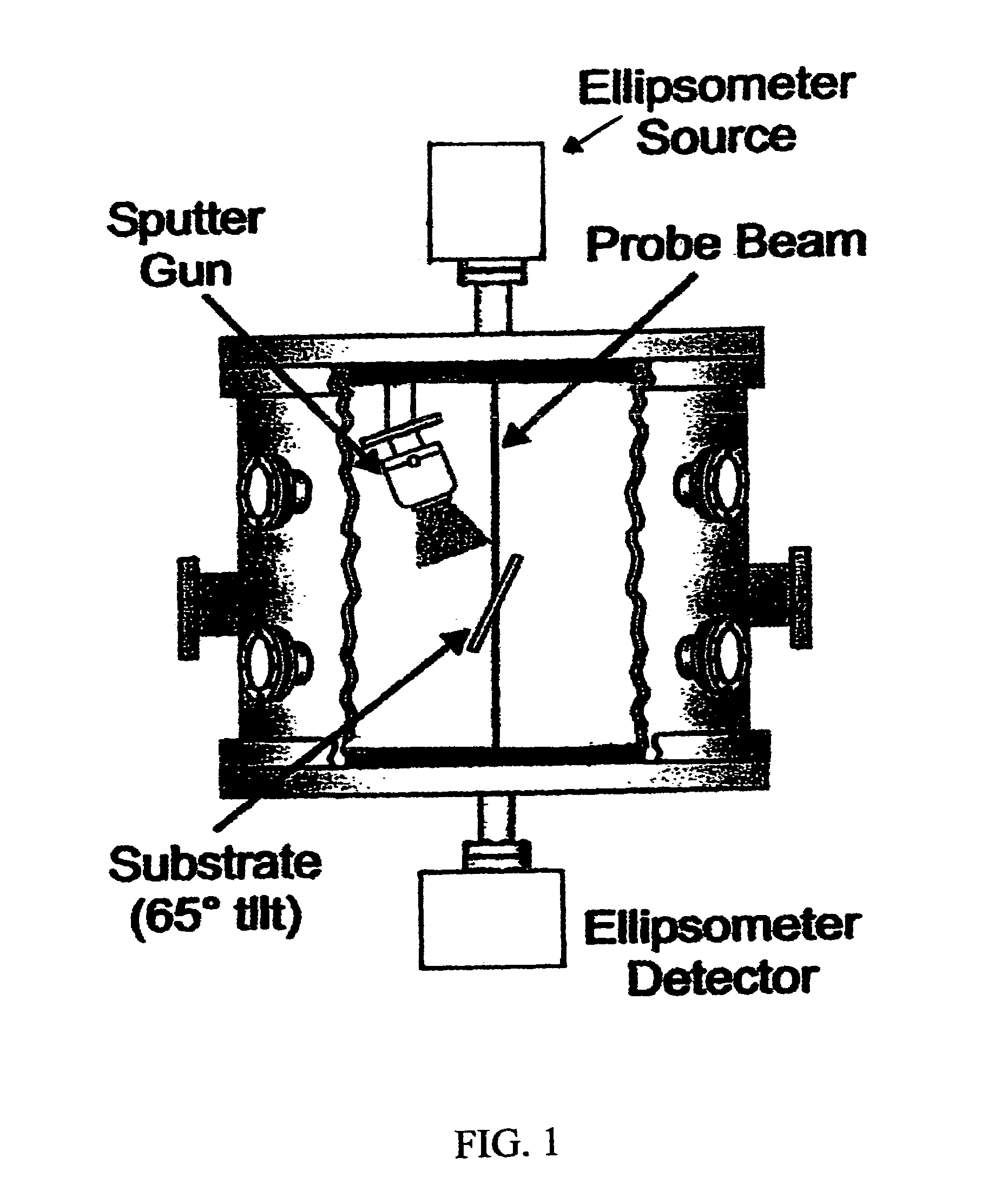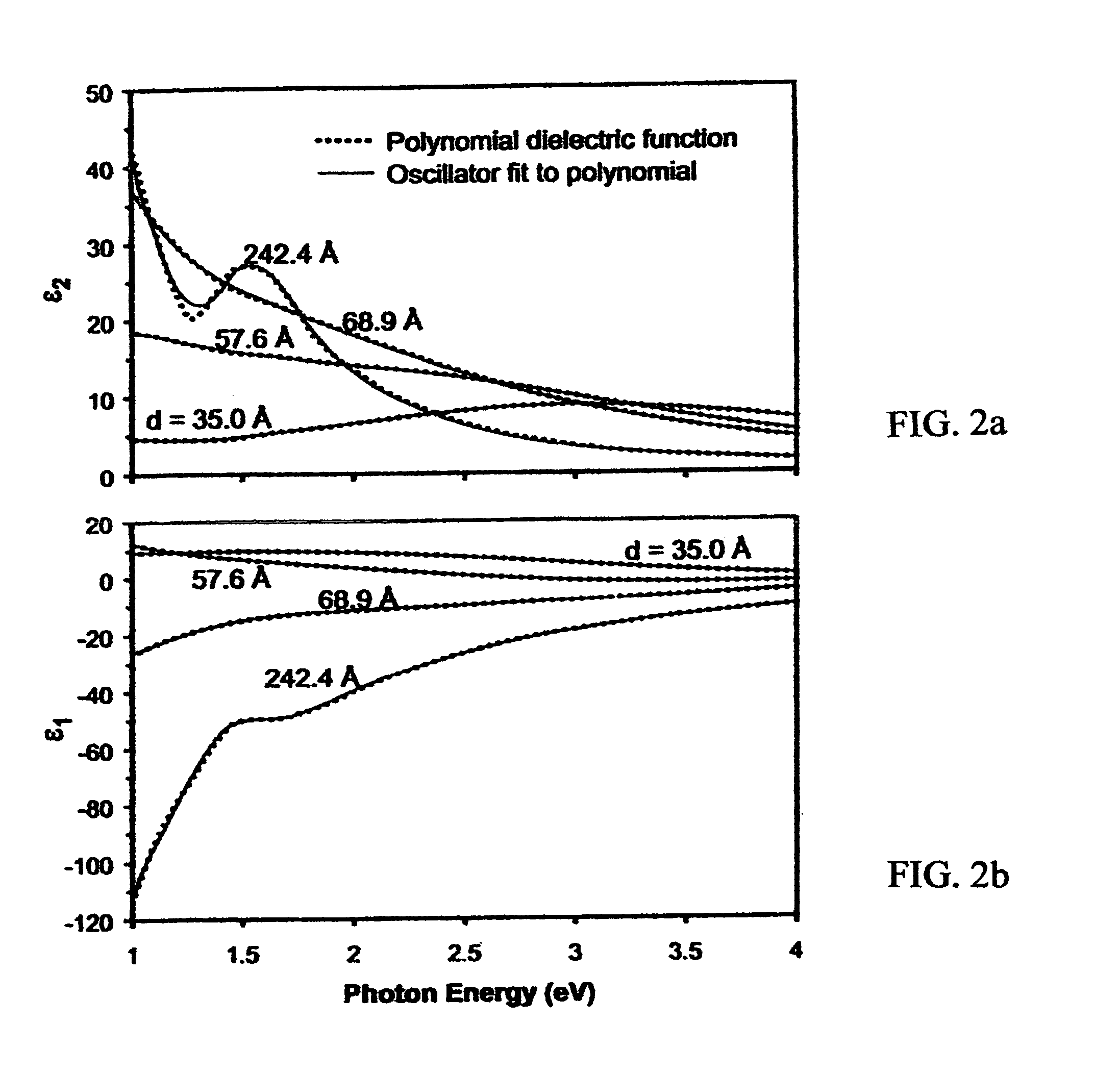Dielectric function of thin metal films determined by combined transmission spectroscopic ellipsometry and intensity measurements
a technology of dielectric function and intensity measurement, applied in the direction of optical radiation measurement, measurement devices, instruments, etc., can solve the problems of inability to measure and transparent substrates
- Summary
- Abstract
- Description
- Claims
- Application Information
AI Technical Summary
Benefits of technology
Problems solved by technology
Method used
Image
Examples
Embodiment Construction
[0051]Turning now to the Drawings, the experimental configuration used to obtain data reported herein is shown in FIG. 1. The deposition system is based on a magnetron sputtering gun where the input gas is injected between the anode and cathode gap. The sputtering gun is tilted approximately 20 degrees from vertical. Gas flow is controlled by an electronic mass flow control system, where argon is used as the sputter gas with a flow rate of 30 sccm. Pure metal sputter targets were used, with a diameter of 54 mm. The target power supply was set to constant DC current mode for all depositions. The system is evacuated by a turbo pump to a base pressure of about 1.3×10−5 Pa. The pressure during deposition was typically 0.13 Pa. Fused silica substrates (3.2 mm thick) were used to allow in-situ transmission measurements. A substrate optical model, using book value SiO2 optical constants for the substrate with a about 4 SiO surface layer, was developed for the fused silica substrates based ...
PUM
 Login to View More
Login to View More Abstract
Description
Claims
Application Information
 Login to View More
Login to View More - R&D
- Intellectual Property
- Life Sciences
- Materials
- Tech Scout
- Unparalleled Data Quality
- Higher Quality Content
- 60% Fewer Hallucinations
Browse by: Latest US Patents, China's latest patents, Technical Efficacy Thesaurus, Application Domain, Technology Topic, Popular Technical Reports.
© 2025 PatSnap. All rights reserved.Legal|Privacy policy|Modern Slavery Act Transparency Statement|Sitemap|About US| Contact US: help@patsnap.com



